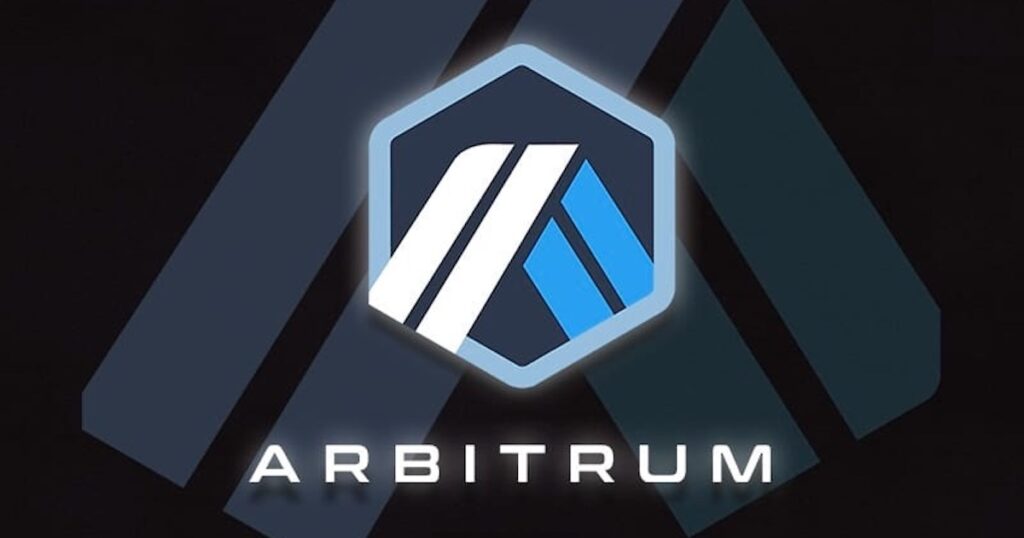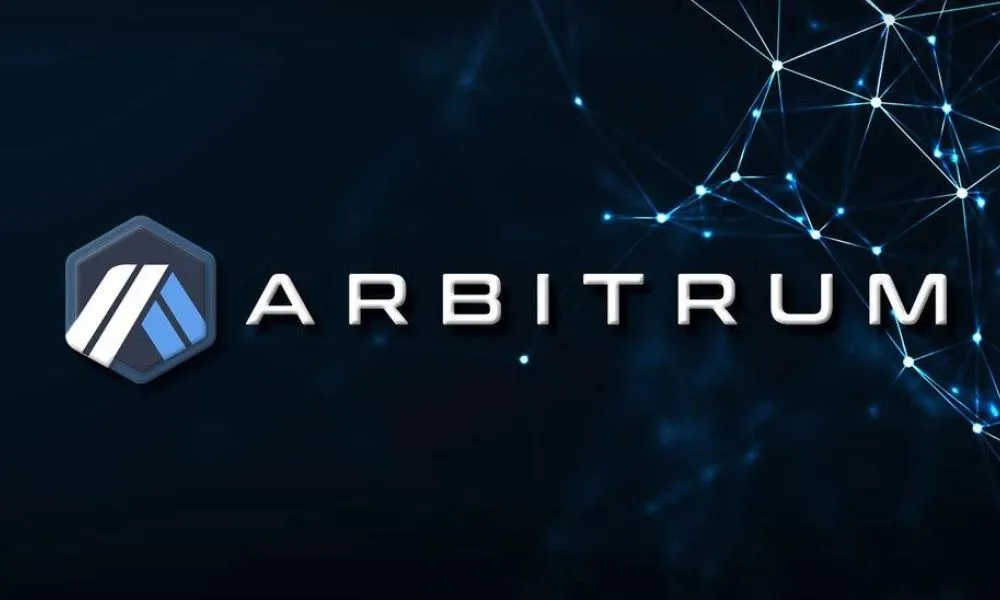Arbitrum is an exciting development for the Ethereum ecosystem, as it promises to significantly improve the network’s scalability and usability, while also opening up new possibilities for developers and users alike.

What is an Arbitrum?
Arbitrum is a layer-2 scaling solution for Ethereum, designed to improve the scalability and efficiency of the Ethereum network. It works by creating a secondary network (known as a “sidechain”) that operates alongside the main Ethereum blockchain. This sidechain is connected to Ethereum through a set of smart contracts, which allow users to move their assets and data between the two chains.
Arbitrum is designed to be fast and inexpensive, allowing users to make transactions quickly and with lower fees than on the main Ethereum network. It achieves this by using an innovative technology called Optimistic Rollups, which allows it to bundle multiple transactions into a single batch, reducing the amount of data that needs to be stored on the blockchain.
One of the main advantages of Arbitrum is that it can support a wide range of Ethereum-based applications, including decentralized finance (DeFi) protocols, NFT marketplaces, and gaming platforms. It also has a high degree of compatibility with existing Ethereum tools and infrastructure, making it easy for developers to integrate their projects with the Arbitrum network.
How does the Arbitrum Chain Work?

Here is an overview of how the Arbitrum chain works:
- Smart Contracts: Arbitrum uses a set of smart contracts on the Ethereum mainnet to manage the communication between the main chain and the Arbitrum sidechain. These contracts serve as the gateway for moving assets and data between the two chains.
- Transactions: When a user wants to make a transaction on the Arbitrum chain, they submit it to the Arbitrum network. The transaction is verified by a set of validators, who check that the transaction is valid and can be executed on the sidechain.
- Optimistic Rollup: Once the transaction is verified, it is bundled with other transactions into a batch and sent to the Ethereum mainnet for settlement. This is done using a technology called Optimistic Rollup, which allows multiple transactions to be processed in a single batch, reducing the amount of data that needs to be stored on the blockchain.
- Settlement: Once the batch of transactions is processed on the Ethereum mainnet, the results are sent back to the Arbitrum chain, where they are verified by the validators. If everything checks out, the transaction is considered complete, and the user’s account balance is updated accordingly.
- Security: To ensure the security of the Arbitrum chain, validators are required to stake a certain amount of cryptocurrency as collateral. If they behave dishonestly or fail to validate transactions correctly, they risk losing their stake. Additionally, the Arbitrum chain uses a fraud-proof system to detect and penalize any invalid transactions.
Arbitrum chain offers a fast and efficient way for users to make transactions on Ethereum, while also maintaining a high level of security and compatibility with the main Ethereum network.
Rooted in the security of Ethereum
Arbitrum is rooted in the security of Ethereum. Arbitrum is a layer-2 scaling solution for Ethereum, which means that it operates on top of the Ethereum blockchain and relies on Ethereum’s security for its own security.
Arbitrum achieves this by using a set of smart contracts on the Ethereum mainnet to manage the communication between the main chain and the Arbitrum sidechain. These contracts serve as the gateway for moving assets and data between the two chains, and they ensure that any transactions on the Arbitrum chain are valid and secure.
To ensure the security of the Arbitrum chain, validators are required to stake a certain amount of cryptocurrency as collateral. If they behave dishonestly or fail to validate transactions correctly, they risk losing their stake. Additionally, the Arbitrum chain uses a fraud-proof system to detect and penalize any invalid transactions.
By leveraging Ethereum’s security and infrastructure, Arbitrum is able to offer a fast and efficient scaling solution for Ethereum, while also maintaining a high level of security and compatibility with the main Ethereum network.
Data availability
Data availability is an important concept in the context of blockchain and layer-2 scaling solutions like Arbitrum. In a blockchain system, data availability refers to the ability of all participants in the network to access and verify the data that is stored on the blockchain.
In the case of Arbitrum, data availability is ensured through a process known as “fraud proofs”. When a transaction is executed on the Arbitrum chain, it is bundled with other transactions into a batch and sent to the Ethereum mainnet for settlement. This is done using a technology called Optimistic Rollup, which allows multiple transactions to be processed in a single batch, reducing the amount of data that needs to be stored on the blockchain.
However, because the actual data for the transactions is stored off-chain, there is a risk that the data may become unavailable or inaccessible to network participants. To mitigate this risk, Arbitrum uses a system of fraud proofs to ensure that all participants can verify the correctness of the off-chain data.
When a batch of transactions is submitted to the Ethereum mainnet, a subset of validators on the Arbitrum chain are selected to watch the batch and check that the off-chain data is correct. If they detect any errors or inconsistencies in the data, they can submit a fraud proof to the Ethereum mainnet, which will trigger a rollback of the batch and a re-execution of the transactions with corrected data.
By using fraud proofs to ensure data availability, Arbitrum is able to maintain a high level of security and reliability, even when working with large amounts of off-chain data. This allows it to offer a fast and efficient scaling solution for Ethereum, while still maintaining the security and decentralization that are key features of the blockchain ecosystem.
AnyTrust

AnyTrust is an essential security feature of the Rollup protocol, which helps strengthen the integrity of transactions on L2. The feature allows any honest verifier, regardless of their location or background, to forcefully ensure that transactions are executed correctly. This is particularly helpful in situations where multiple malicious actors are trying to stop transactions from being carried out. With AnyTrust, you have the peace of mind knowing that you or someone you hire can take the necessary steps to make sure that transactions are carried out correctly without needing to rely on any third-party or centralized authority. Additionally, AnyTrust simplifies the process of verifying transactions, streamlining the overall experience and ensuring that all parties involved have a clear understanding of what is happening at all times.
Emergency exit mechanism
Arbitrum’s emergency exit mechanism is not explicitly defined. Nonetheless, Arbitrum implements several security mechanisms to ensure that users can exit the system in case of an emergency.
Firstly, data availability is a key feature that allows users’ assets and data to be recovered from L1 at any time, thus preventing any potential loss.
Secondly, users can initiate a transaction request to the Inbox contract on L1 to force a withdrawal. This feature provides users with additional control over their assets and ensures that they can be withdrawn at any time.
Furthermore, the AnyTrust mechanism guarantees that the withdrawal transaction is processed correctly by L2, thus preventing any potential loss of assets.
All of these features are designed to minimize the trust required by users, providing a secure platform that is built on the trustless principles of Ethereum. By ensuring that users have recourse to an emergency exit in case of any issues, Arbitrum demonstrates its commitment to the security of its users’ assets and data.
Why the challenge period is 7 days
Arbitrum is a multi-round interactive Rollup solution that aims to make the entire system safer and faster. The solution works by first assuming that the assertion made by the verifier is correct, and only challenging it if other verifiers refute it during the challenge period. In the absence of any challenges, the entire system can make progress faster and at a lower cost. However, the challenge period has to be carefully optimized to ensure the best user experience.
So how do we find the optimal challenge period? The Arbitrum team has proposed a model that calculates the optimal challenge period based on several factors. First, assuming that a challenge period is the length of C blocks and the maximum value that an attacker could get on L2 is V, then the expected value got by the attacker is V exp(-AC). Here, A is some constant A, and the “-” sign before AC suggests that C is inversely proportional to the expected return. The longer the challenge period is, the safer the entire system is, but at the same time, the user experience would be worse. This is because users have to wait until the challenge period ends when withdrawing.
Second, the asserter needs to pledge assets far greater than the value of the attack to respond to the attack. Assuming that the asserter needs to pledge 10 times the value of the attack and the cost of the asserter is 10V exp(-AC)I, where I is the capital interest rate.
Third, we assume that withdrawal assets of the withdrawal user locked in the challenge period are CWV, where W is a small decimal, WV is part of the total assets on L2, and each time point will have C blocks that have not ended the challenge. The cost of assets for users is CWVI.
Finally, the length of the optimal challenge period is at the lowest total cost of assets of asserters and withdrawal users. That is, when the value of C is taken, 10V exp(-AC)I+CWVI is at a minimum. V and I occur in both terms, so they won’t affect the minimum point and can be ignored. We just need to take the derivative of C, set the resulting derivative equal to 0, and get C = ln(10A / W) / A.
Plugging in some plausible numbers into the above equation, assuming that the success rate of continuous censorship for one block time is as high as 99.99%, which amounts to A = -ln(0.99) = 0.01, and further assuming that 1% of the total value is withdrawn each day and that the percentage of withdrawals per block is approximately W=0.000002, based on 1 block in 15 seconds, we get an optimal challenge delay of C = 62146 blocks, which is 10.79 days. This is very close to the 7-day optimal challenge period finally chosen by the Arbitrum team.
Conclusion
The security of Arbitrum is rooted in the security of the Ethereum blockchain, on which it is built. Arbitrum uses a combination of smart contracts, fraud proofs, and a staking system to ensure the integrity of transactions and the safety of user funds.
By using a layer-2 scaling solution like Arbitrum, users can enjoy fast and efficient transaction processing while still benefiting from the security and decentralization of the Ethereum network. Additionally, the use of fraud proofs and staking mechanisms helps to ensure that any attempts at malicious behavior are quickly detected and prevented, further enhancing the security of the platform.
The security of Arbitrum is a key factor in its popularity and success as a layer-2 scaling solution for Ethereum. As the demand for blockchain-based applications and services continues to grow, solutions like Arbitrum will play an increasingly important role in enabling secure, fast, and scalable transactions on the Ethereum network and beyond.
DISCLAIMER: The Information on this website is provided as general market commentary and does not constitute investment advice. We encourage you to do your own research before investing.
Join us to keep track of news: https://linktr.ee/coincu
Annie
Coincu News























